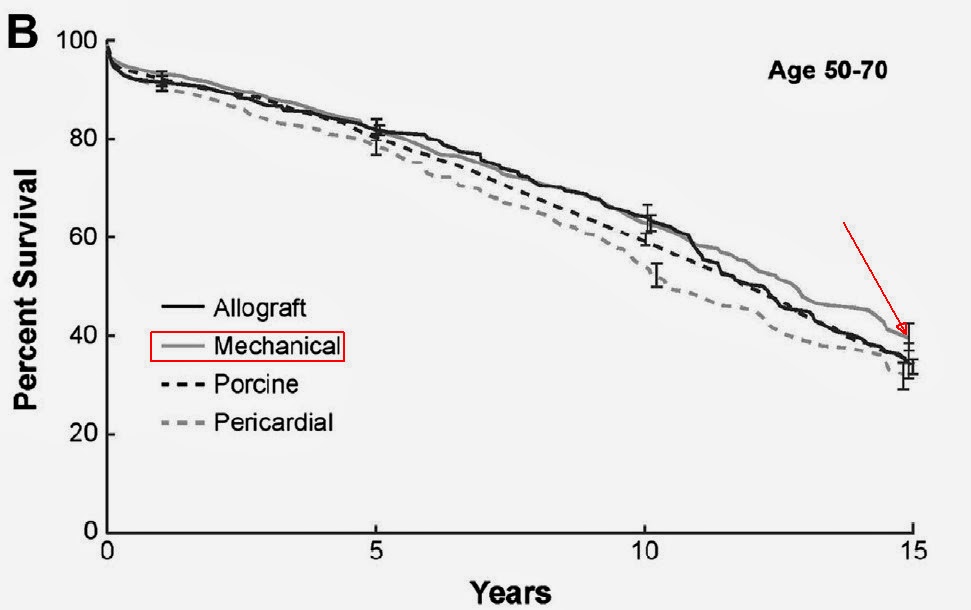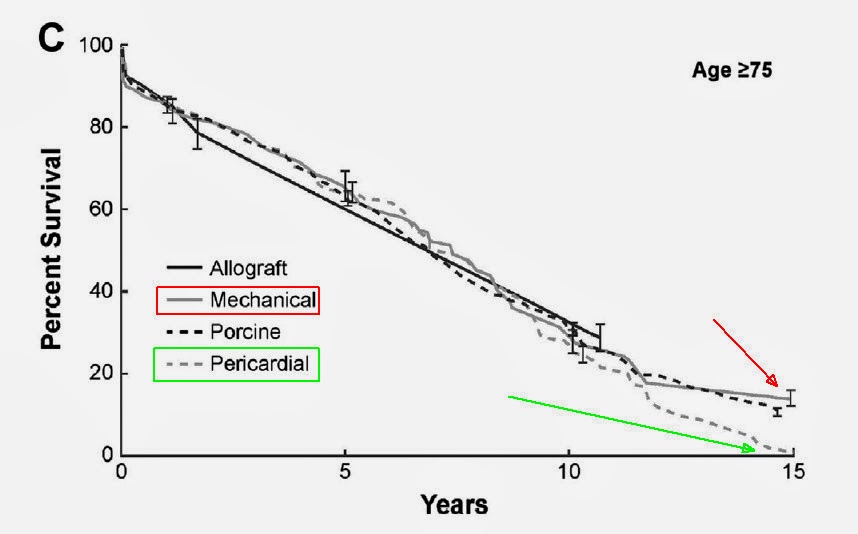H
H.A. Olson
My wife (age 71) is scheduled to have both mitral and aortic valves replaced February 18. The surgeon sez:"How old are you? 71? If it were me, I'd go for the tissue valve." The cardiologist sez: "I'm not a big fan of tissue valves; the service life is still not very predictable, but it's your decision."
We decided to go with the tissue valve (thus SUPPOSEDLY avoiding the coumadin/"borderline hemophiliac for the rest of your life" spectre. But now we've discovered approximately 50% of patients go into atrial fibrillation due to traiuma of surgery which then requires at least short-term (several months?) coumadin regimen and possibly coumadin long-term/for life.
We realize nothing is certain or 100% predictable; we're dealing in overall probabilities here. But, our understanding was:
* mechanical valve = nearly 100% "guarantee" valve would
outlast the patient but downside is coumadin-for-life
* tissue valve=7-10 year valve life (depending on recipient age
and lifestyle) but supposedly coumadin-free post-op life.
Of course surgery will again be needed due to tissue valve
predictably failing 7-10 years (who knows?) hence.
Age 71 is sort of a "gray area" age on this "tissue vs. mechanical" question. But - - Have we made a perhaps flawed "pact with the devil"? If there's a high probability she will end up on coumadin anyway due to atrial fibrillation, the "advatages"of the tissue valve seem to be significantly reduced. It's getting awfully close to February 18. Is this concern of ours making any sense? Does anyone out there have any experience/information on this question. I don't see too many folks on this site talking about their experiences with tissue valves and/or resulting atrial fibrillation experiences. Any help would be appreciated. Will have enough to think about in days ahead without the extra burden of "did we make a dumb decision?" Many thanks for any input; this web site is great!
Herb in Houston
We decided to go with the tissue valve (thus SUPPOSEDLY avoiding the coumadin/"borderline hemophiliac for the rest of your life" spectre. But now we've discovered approximately 50% of patients go into atrial fibrillation due to traiuma of surgery which then requires at least short-term (several months?) coumadin regimen and possibly coumadin long-term/for life.
We realize nothing is certain or 100% predictable; we're dealing in overall probabilities here. But, our understanding was:
* mechanical valve = nearly 100% "guarantee" valve would
outlast the patient but downside is coumadin-for-life
* tissue valve=7-10 year valve life (depending on recipient age
and lifestyle) but supposedly coumadin-free post-op life.
Of course surgery will again be needed due to tissue valve
predictably failing 7-10 years (who knows?) hence.
Age 71 is sort of a "gray area" age on this "tissue vs. mechanical" question. But - - Have we made a perhaps flawed "pact with the devil"? If there's a high probability she will end up on coumadin anyway due to atrial fibrillation, the "advatages"of the tissue valve seem to be significantly reduced. It's getting awfully close to February 18. Is this concern of ours making any sense? Does anyone out there have any experience/information on this question. I don't see too many folks on this site talking about their experiences with tissue valves and/or resulting atrial fibrillation experiences. Any help would be appreciated. Will have enough to think about in days ahead without the extra burden of "did we make a dumb decision?" Many thanks for any input; this web site is great!
Herb in Houston


























